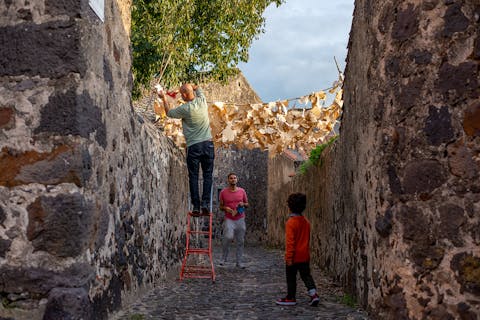Francesca Sassu and her Nocefresca project: an artist’s home in Sardinia | Olianas
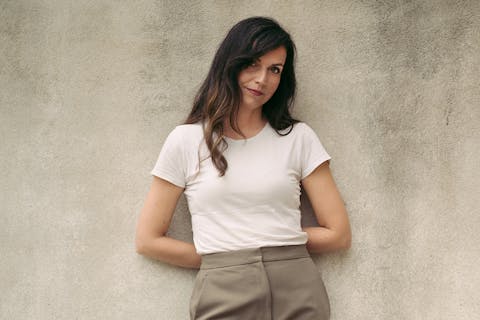
People
Francesca Sassu and her Nocefresca project: an artist’s home in Sardinia
by Jessica Cani
A walnut. A protective shell, a seed, a heart. From this image comes Nocefresca, the artist’s residence conceived and led by Francesca Sassu in Milis, a small town in the Oristano area. The project revolves around the idea of truly inhabiting a place, feeling at home within a choice, and perhaps within a vision.
Francesca was born and raised in Cagliari. She studied political science but immediately moved to the margins of that discipline, searching for a path that would lead her into the world of culture and art. “I could have chosen literature or the Academy of Fine Arts, but at that moment I needed a broader, more pragmatic path—a way that would allow me to leave.” And so it was: with an Erasmus in Madrid and a thesis on cultural policies in Italy and Spain, Francesca began to chart her hybrid path, made of study and observation. “People working in art usually have degrees in art history or cultural heritage,” she explains. “In my case, art entered a path more focused on territorial policies and development.”
After graduating, the first real step-change arrived: a master’s in cultural management in Rovereto, one of the few in Italy that did not require a humanities degree. “In the classroom, we came from very different backgrounds: philosophers, economists, mathematicians. It was there that I realized art could also be a managerial practice, a way to design the world, not just to tell its story.”
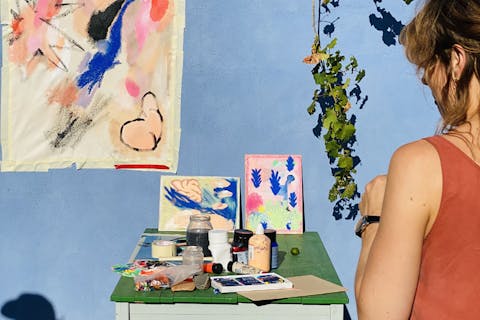
The roots of the project lie in Francesca’s years working within public institutions. For five years, she served as secretary to the Cultural Councilor of the Municipality of Cagliari, observing firsthand the frustrations of a public cultural system often paralyzed by lack of continuity and funding. “I saw projects born and die within a month, artists arriving, working in the territory, and then everything vanished,” she recalls. “I wanted to build something, to improve it over time, not always start from scratch.”
The frustration was not only professional but also existential. “In general, working in the public sector often makes you lose creativity and interest,” Francesca reflects. “It’s very difficult to carry on projects that have already been started. Every time I had to start over, and this not only caused me pain, it also drained my motivation.” But there was a ritual that saved her, a daily moment of grace that restored meaning: “At the end of the day I would come here; it was already sunset, but that one hour, that swim, was enough to say, ‘okay, my life makes sense.’” That “here” is the sea of Cagliari—the same place where we met one July morning for our interview, enjoying the privilege of being able to work anywhere.
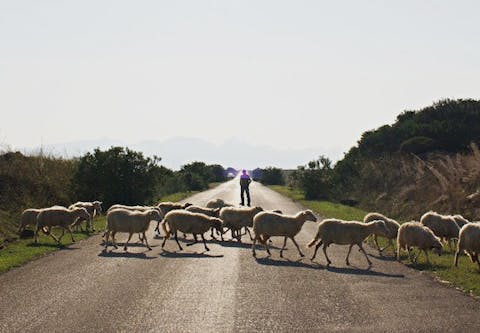
The turning point came thanks to a call from the Department of Agriculture, which funded non-agricultural enterprises in rural areas. Francesca seized the opportunity after months of reflection and planning, supported by her family and driven by the determination to create something lasting.
Nocefresca was born from fatigue and from a dream. From a sunset swim after yet another long day at the municipality. From an intuition sparked by conversations with her father and a grant suggested by her brother. The initial idea was bigger than what she could sustain, but, as often happens, reality reshaped it, making it more solid and sustainable.
After numerous attempts to find a suitable location near Cagliari, Milis proved to be the answer. An encounter with the mayor and, above all, the connection with Casa Bagnolo—a historic house restored with original materials and a deep identity tied to the territory. “I discovered only later that Engineer Bagnolo, the owner of the house, had dreamed of a village full of artists. In a way, it was written; that was his destiny.”
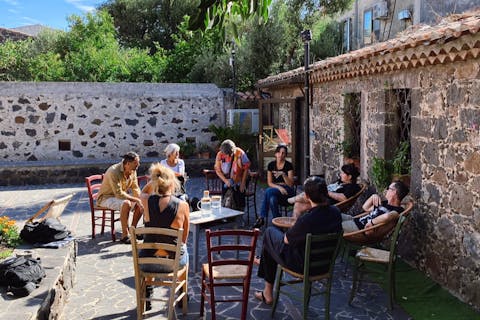
To fully understand what Nocefresca is, one must start from the idea of a residency as a suspended space—a place where one can experiment without having to prove anything. An artist residency is a program that offers creatives (visual artists, writers, musicians, performers, curators…) the chance to live and work temporarily in a place different from their usual environment, dedicating themselves exclusively to research and artistic production. The world of artist residencies is constantly evolving, with new models responding to contemporary challenges: environmental sustainability, social inclusivity, economic accessibility, and technological support.
What remains constant is the fundamental value: providing artists with time, space, and opportunities to deepen their research in a stimulating and protected environment, while at the same time building cultural bridges between different communities and territories. What makes an artist residency special is its transformative potential.
As the experience of Nocefresca shows, many artists describe the residency as life-changing—an experience that goes beyond artistic production to touch profound existential dimensions.
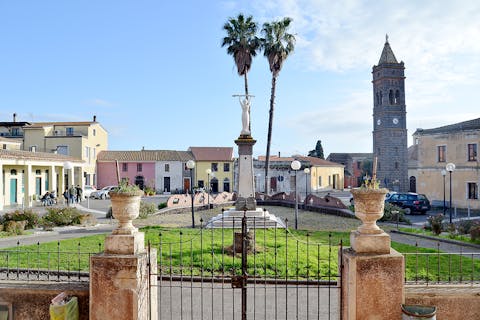
In the international landscape of artist residencies, there are many types, each with its own philosophy, audience, and promises. The choice between an urban residency, one immersed in nature, or one like nocefresca says a lot about the artists themselves, their creative needs, and the stage of their career.
“Milan, Turin, New York, London. I couldn’t compete with these cities.” Residencies in major metropolises are networking machines, ecosystems where art meets the market in all its forms. “You arrive in the city, and the artist is put in contact with gallerists, collectors, and curators,” explains Francesca, who visited many of these residencies to understand how they work. “There’s a whole world, and that’s why the artist goes there.” These residencies attract artists with an already solid body of work seeking visibility and commercial opportunities. They are spaces where one goes to be seen, to present work to those who can buy, exhibit, or review it. The artistic experience blends with the entrepreneurial one.
At the other extreme are completely isolated residencies: mountain retreats, cabins in the woods, or seaside facilities far from any town. These places attract artists seeking creative purification, a direct and primal confrontation with themselves and with nature. They are spaces for those who want to strip away the superfluous, distractions, and social pressures to reconnect with the essence of their artistic language.
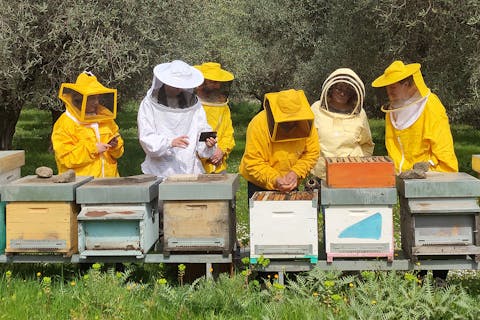
Unlike these artistic residencies, nocefresca chooses to be part of the town and everyday life. “In my vision, art enters a place and can become a vital force that transforms it. If it remains isolated, it only serves those who inhabit that space, but it does not realize its full potential.” What makes nocefresca unique is its ability to offer solitude without isolation. Artists have individual spaces for creation, yet live immersed in the social fabric of the town: harvesting grapes, collecting olives, chatting with local women, being invited to dinner by neighbors. “This house is permeable. It’s not a closed refuge, but a place where art can become a relationship. It has always been my way of working: creating bonds between artists and the community, ensuring the exchange is fertile and lasting. Many artists don’t have cars, so they make friends with residents and get around with their help,” she explains.
This apparent limitation becomes a strength: it encourages encounter, mutual trust, and a slow discovery of the territory. The result is that nocefresca offers not only an artistic experience but an alternative way of living. Artists return home not only with new works but with a different awareness of how one can inhabit the world. “The fact that what they have learned here is not only tied to this place but can travel elsewhere and inhabit other spaces,” Francesca observes, “goes beyond the objective I had envisioned myself.” And it works!
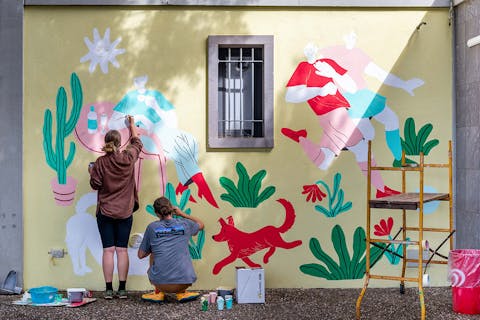
Today, nocefresca receives more than 200 applications a year from all over the world. Each year, 42 artists are selected, divided between short stays and longer, more structured residencies. The artists come from the United States, Canada, Northern Europe, Australia… countries where art is often supported by public scholarships, or where artists can afford to invest in their own growth. The project’s financial support comes precisely from these participation fees, which provide nocefresca with an autonomous and self-sustaining base.
“Of course, at the beginning I even struggled to imagine asking for a financial contribution. I came from the public sector, where everything was free for the artist. But those models collapsed as soon as the funding ended. I wanted something that could last.”
Last, but not least: last and grow. Today nocefresca is not only a house but also an ecosystem. It hosts artists, fosters relationships, and encourages collaborations. Some artists have chosen to return multiple times, others are looking for a home to move to Sardinia. One even got married after meeting their partner during a residency. “They often write to me saying that the experience in Milis has changed the way they live. It’s as if they discover here an alternative to the frenzy of big cities. A space to slow down and listen.”
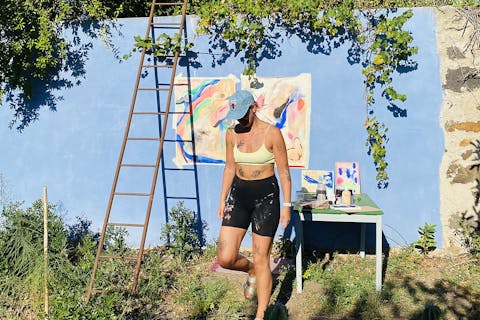
Today Francesca looks ahead. After sharing the project mainly through social media, she felt the need to slow down the storytelling as well, giving weight and form to the time spent. This is how Rural Alphabet was born, a book that collects works and stories created in Milis, but speaks to anyone who reflects on the meaning of dwelling, creating, and rooting oneself. The book is structured as an emotional and visual alphabet, a living archive in which each letter, each word, each image conveys a fragment of the relationship between artist, territory, and community. It is neither a catalog nor a diary: it is a curatorial gesture, an invitation to observe slowly what has happened – and continues to happen – within and around nocefresca.
“There are artists that some locals only met by chance, in a bar or at a party. Others left a silent mark that resurfaces months later in a work or a phrase. I wanted all of this to be leafed through. To remain.”
Rural Alphabet marks a moment of awareness from which Francesca begins to imagine more complex and inclusive developments: thematic exhibitions, commissioned works, calls dedicated to artists from underrepresented cultural backgrounds. A way to widen the circle while staying true to the original identity. “Now that the structure is stable, I can think of deeper developments. I want to continue generating impacts, even those I hadn’t foreseen. Like ripples in water, after you throw a pebble.”
Nocefresca is this: a place that welcomes and generates possibilities. A residency that is also a way of seeing the world. An act of care for artists, for the territory, and for an idea of dwelling that today, perhaps, is more revolutionary than ever.
